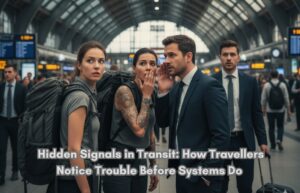Why This Matters Now
Criminals rarely keep stolen money or illicit assets in one place. Funds can move between countries in seconds, often passing through multiple bank accounts, shell companies, or cryptocurrency wallets. This makes cross-border asset tracing, the process of finding and following assets hidden in different jurisdictions, a critical part of modern law enforcement and corporate investigations.
Recent developments in global policing, legislation, and technology have changed how asset tracing is done. New international notices, stricter regional laws, and specialist skills in cryptocurrency investigations are shifting the balance. These changes are not only relevant to governments and lawyers but also to anyone whose business, investments, or assets could be targeted by fraud or theft.
Interpol’s Silver Notices: A Faster Tool Than Old Systems
In January 2025, Interpol launched its first-ever Silver Notice. Until now, Interpol notices were most commonly used to locate people, such as fugitives (Red Notices). The Silver Notice is aimed specifically at tracking assets, not individuals.
The first Silver Notice was issued at the request of Italian authorities targeting mafia-linked property and funds. It is part of a pilot programme running until November 2025 and involves 52 participating countries. Up to 500 notices can be issued during this trial phase.
Traditionally, if a country wanted help tracing or seizing assets in another jurisdiction, it would use an MLAT (Mutual Legal Assistance Treaty). An MLAT is a formal agreement between two countries to share evidence or enforce actions such as asset freezes. While effective, MLATs are slow and bureaucratic, often taking months or years to complete.
The UK’s statistics highlight the problem. In 2023–24, only £5.8 million was recovered internationally through MLATs, compared to £243 million domestically. Silver Notices aim to close this gap by allowing faster, more targeted asset alerts that member countries can act on almost immediately.
If the pilot succeeds, Silver Notices could become a permanent tool, helping investigators locate everything from offshore accounts to luxury real estate held under false names.
Europe’s Push for Unified Asset Recovery Rules
In April 2024, the European Union introduced Directive (EU) 2024/1260. This law sets minimum standards for tracing, freezing, confiscating, and managing criminal assets across all EU member states.
The aim is to make asset recovery consistent, so a case in Spain is handled the same way as in Germany or Poland. This matters because criminals exploit differences in national laws by choosing countries where it is harder for authorities to act.
However, legal practitioners note that national differences still exist. The directive sets the framework, but individual countries still have their own timelines, procedures, and resource levels. Until these differences are resolved, gaps in enforcement will remain.
For businesses operating in or trading with the EU, this is relevant because assets can be hidden anywhere in the bloc. Understanding where the legal process is strongest or weakest can affect the success of recovery efforts.
Cryptocurrency Enters the Insolvency Process
Cross-border asset tracing is not limited to traditional bank accounts or property. Increasingly, investigators must trace digital assets such as Bitcoin or Ethereum.
In June 2025, the UK’s Insolvency Service appointed its first crypto intelligence specialist. This person’s role is to track and recover digital assets linked to bankrupt companies or individuals. The appointment reflects a growing trend, with crypto-related insolvency cases in the UK rising by 420% in five years.
In 2024 – 25 alone, the Insolvency Service identified more than £500,000 in cryptocurrency linked to bankruptcies. Unlike traditional assets, crypto can be moved instantly across borders without relying on banks. This makes it harder to trace, but blockchain transactions are public records, and specialist tools can follow the trail if used quickly.
The growing role of crypto in insolvency means asset tracing teams must combine financial investigation skills with technical knowledge of blockchain technology.
FATF Warnings on Virtual Assets
The Financial Action Task Force (FATF), a global body that sets anti-money laundering standards, reported in 2025 that criminals used virtual assets in scams and fraud worth more than $51 billion in 2024. Only a fraction of these funds was recovered.
A major challenge is that criminals now use non-custodial wallets, digital wallets where the user, not a third party such as an exchange, controls the keys. This makes freezing assets harder because there is no central authority to cooperate with.
They also use privacy-enhancing tools such as “mixers,” which blend cryptocurrency transactions to hide the original source. Regulations are trying to catch up, but cross-border cooperation is often too slow for assets that can disappear in minutes.
Common Hiding Places for Illicit Assets
Tracing hidden wealth starts with knowing where it is most likely to be concealed. Criminals and dishonest actors often use a combination of the following methods:
- Offshore companies and trusts– Entities in secrecy jurisdictions can hide beneficial ownership, making it harder to link assets to their true owner.
- Layered bank transfers– Multiple quick transfers between different accounts and countries are designed to obscure the original source of funds.
- Luxury goods– Art, jewellery, classic cars, and yachts can hold significant value and be moved or sold discreetly.
- High-value property– Real estate in major financial hubs is a common store of illicit wealth because it can appreciate in value while remaining under the radar.
- Trade-based laundering– Over- or under-invoicing goods to move value across borders without direct bank transfers.
- Digital assets– Cryptocurrency wallets, especially non-custodial or privacy-enhanced types, allow value to be transferred quickly with minimal oversight.
Understanding these common asset-hiding techniques can make investigations faster and more focused. The earlier these red flags are identified, the more likely it is that assets can be traced and frozen before they are lost.
How Asset Freezing Works
Asset freezing is a legal measure that prevents the sale, transfer, or use of assets suspected to be linked to criminal activity or ongoing investigations. It is not only used in criminal matters. Asset freezing can also play a role in corporate disputes, personal investigations, and divorce proceedings where there is a risk that assets may be hidden, transferred, or depleted before a legal resolution.
It is not the same as asset confiscation; the ownership does not change, but the assets cannot be moved or disposed of during the order’s duration. Freezing orders can apply to bank accounts, properties, shares, luxury goods, and even cryptocurrency wallets. Once issued by a court or authorised authority, the order is served on the institution or party holding the asset, who must then comply.
The process often involves:
- Identifying the assets through investigation and intelligence gathering.
- Presenting evidence to meet the legal threshold for a freezing order.
- Enforcing the order locally or through international cooperation.
- Maintaining the freeze until a court decides on forfeiture, return, or other outcomes.
When used promptly, asset freezing prevents the dissipation of illicit wealth, buying time for deeper investigation and eventual recovery.
Case Study: Litigation-Aligned Asset Tracing
A recent Futurum Risk investigation involved tracing concealed assets across multiple jurisdictions in support of ongoing litigation. The client suspected that high-value property and corporate interests had been deliberately fragmented through offshore structures and nominee arrangements.
Our investigation identified more than 20 corporate entities linked to the subject, including property holdings worth several million pounds in the UK and a residential unit in Hong Kong held via a shell company. Additional assets included racehorses, financed luxury vehicles, and cross-border accounts associated with offshore entities.
The team combined OSINT methodologies, financial forensics, and digital lifestyle mapping to confirm beneficial ownership and uncover audit discrepancies in associated companies. Findings revealed unregulated capital-raising schemes, questionable gold-backed instruments, and undisclosed income streams routed through low-regulation jurisdictions.
Within months, the evidence provided the client’s legal team with a comprehensive asset map, enabling interim relief applications, enforcement preparation, and strategic settlement positioning. This case demonstrated the value of litigation-aligned intelligence in revealing concealed wealth and supporting cross-border recovery efforts.
Practical Takeaways for Businesses and Individuals
- Act fast– The longer an asset is left untraced, the harder it becomes to recover.
- Understand jurisdictions– Different countries have different rules; knowing them can shorten recovery time.
- Leverage technology– Blockchain analytics, digital forensics, and data-sharing platforms are essential in modern tracing.
- Build networks– Having trusted international contacts can open doors that legal channels alone cannot.
- Stay informed– Laws and tools are changing rapidly; staying updated can be the difference between recovery and loss.
The Path Forward
Cross-border asset tracing is entering a new phase. Advances in technology, stronger international cooperation, and specialist expertise are making it possible to recover assets once thought lost. Yet the same tools can also help those who hide wealth, meaning the challenge is constantly evolving.
Success now depends on speed, adaptability, and the ability to operate across multiple legal and cultural landscapes. This requires navigating varied jurisdictional rules, understanding emerging financial technologies, and maintaining trusted relationships with investigators, legal teams, and enforcement agencies worldwide.
For corporations, private clients, and legal teams, asset tracing should be seen not only as a response to wrongdoing but as a proactive safeguard when valuable assets are at risk. With the right mix of legal insight, investigative skill, and rapid coordination, even assets hidden through sophisticated methods can be found, secured, and returned to their rightful owners.





